What is Portable Ultrasound Machine?
Updated: January 6, 2025
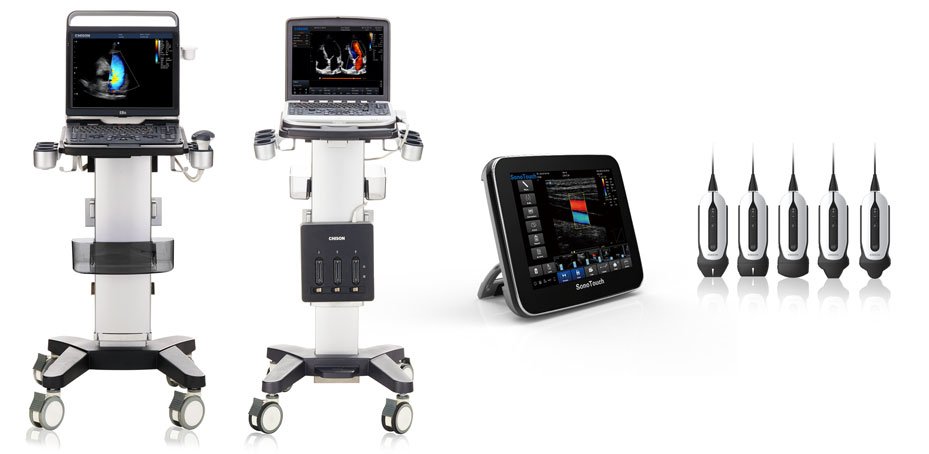
Ultrasound technology utilizes high-frequency sound waves to create live images of internal body structures. By emitting sound waves through a transducer, it captures echoes as they reflect off tissues and organs, converting them into visual data.
Widely used in medical diagnostics, pregnancy monitoring, and therapeutic procedures, it offers a non-invasive, radiation-free solution for real-time imaging. Its versatility and safety make it a cornerstone in both healthcare and industrial applications.
What is a Portable Ultrasound Machine?
A portable ultrasound machine is a compact diagnostic device designed to perform ultrasound imaging in various environments, offering flexibility and convenience. Like traditional ultrasound systems, it uses high-frequency sound waves to create images of internal body structures, such as organs, tissues, and blood vessels.
What sets it apart is its lightweight design and portability, allowing healthcare professionals to conduct imaging procedures in non-traditional settings.
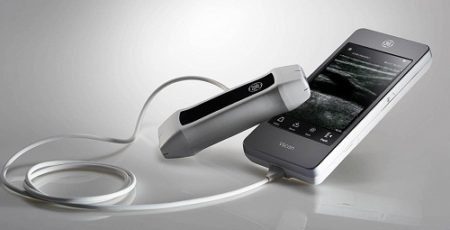
Comparison of traditional and portable ultrasound machines
Traditional and portable ultrasound machines cater to the same purpose—diagnostic imaging—but differ significantly in their design, functionality, and application. Here’s a unique comparison between the two:
- 1. Portability and Size
- Traditional Ultrasound Machines: These are large, stationary devices designed for hospital or clinical use. They often require a dedicated room and a significant setup.
- Portable Ultrasound Machines: Compact and lightweight, these devices can be carried by hand or on a small cart, allowing point-of-care diagnostics in various settings, including homes, ambulances, and remote areas.
- 2. Use Case Flexibility
- Traditional Machines: Ideal for comprehensive imaging in controlled environments. They are suitable for detailed diagnostics requiring advanced imaging modalities like 3D and Doppler imaging.
- Portable Machines: Best suited for quick, on-the-spot diagnostics and emergencies. They are versatile enough for use in diverse environments, from rural health camps to battlefield medicine.
- 3. Image Quality
- Traditional Machines: Typically offer superior image resolution and detail due to advanced technology and powerful hardware. They are the gold standard for complex and high-precision imaging.
- Portable Machines: While capable, they may have slightly reduced image quality compared to their traditional counterparts. However, advancements in technology have significantly narrowed this gap.
- 4. Power and Performance
- Traditional Machines: Equipped with high-powered processors, they deliver exceptional imaging quality and can handle complex diagnostic needs with ease.
- Portable Machines: While their imaging capabilities have improved significantly, they may lack the advanced hardware found in traditional machines. However, for routine scans and quick diagnostics, they are highly efficient.
- 5. Accessibility
- Traditional Machines: Limited to facilities with dedicated space and infrastructure. Their immobility often restricts access to patients in remote or critical situations.
- Portable Machines: Enable diagnostics anywhere, breaking barriers to healthcare in remote, underserved, or emergency scenarios.
- 6. Cost and Maintenance
- Traditional Machines: Higher initial cost and maintenance expenses due to their size and complexity. They also require specialized staff for operation and care.
- Portable Machines: More cost-effective, with lower upfront and operational costs. Their user-friendly design minimizes the need for specialized training and maintenance.
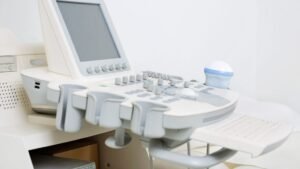
Components and Features of Portable Ultrasound Machines
Portable ultrasound machines are revolutionizing the way healthcare professionals diagnose and monitor patients. These compact, versatile devices combine the power of traditional ultrasound technology with the flexibility needed for on-the-go use.
Below is an in-depth look at the essential components and features that make portable ultrasound machines so effective and indispensable in modern healthcare.
Key Components of Portable Ultrasound Machines
- Transducer/Probe
- Function: The transducer, or probe, is the most critical component of any ultrasound machine. It generates and receives sound waves, which are then used to create detailed images of internal organs and structures.
- Types of Probes:
- Linear Probe: Best for superficial structures like the thyroid or vascular imaging.
- Convex Probe: Used for abdominal imaging as it offers a wider field of view.
- Phased Array Probe: Essential for cardiac imaging, this probe can fit into tight spaces, like between ribs.
- Design: Portable ultrasound machines feature probes that are lightweight, ergonomic, and often have wireless capabilities, reducing the need for cumbersome cables.
- Display Screen
- High-Resolution Screen: Portable ultrasound machines are equipped with compact, high-definition screens that deliver clear, real-time images. Some devices feature LED or LCD screens, which allow for improved image clarity in different lighting conditions.
- Touchscreen Interface: Many modern portable ultrasound devices feature touchscreens, providing a more intuitive user experience and reducing the need for external controls.
- Screen Size: While portable, these devices still maintain adequate screen size (typically between 7 to 15 inches), ensuring the user can clearly see the ultrasound images.
- Control Panel
- Functionality: The control panel is where the user adjusts settings such as gain, depth, focus, and image orientation. It is designed for ease of use, often featuring large, user-friendly buttons or sliders.
- Simplified Controls: In portable ultrasound machines, the control panel is minimized to save space, often replacing some manual knobs and buttons with touch-sensitive sliders or icons on the display.
- Processing Unit
- Role: This is the computational backbone of the machine, where the data from the transducer is processed into images. Despite the small size, portable ultrasound systems have powerful processors capable of generating real-time imaging and advanced features.
- Energy Efficiency: Portable units are designed to be power-efficient while maintaining high processing speeds, essential for use in environments with limited electrical resources.
- Battery Unit
- Rechargeable Battery: A rechargeable battery is a critical feature, providing hours of uninterrupted use in various settings like rural clinics, emergency rooms, and field hospitals.
- Long Battery Life: Most portable machines are designed to work for 4-8 hours on a single charge, depending on the model and usage.
- Replaceable Battery Packs: Some portable ultrasound machines offer replaceable battery packs to extend operational time during extended use.
- Connectivity and Data Ports
- USB and HDMI Ports: These allow users to connect the ultrasound machine to external devices such as printers or computers for image transfer, reporting, or further analysis.
- Wi-Fi and Bluetooth: Many portable models feature wireless connectivity, enabling the transfer of images and reports to electronic medical records (EMR) systems, or to consult with specialists remotely in real-time.
- Cloud Integration: Some advanced portable ultrasound devices are equipped with cloud-based solutions, facilitating the sharing and storage of ultrasound images for later reference.
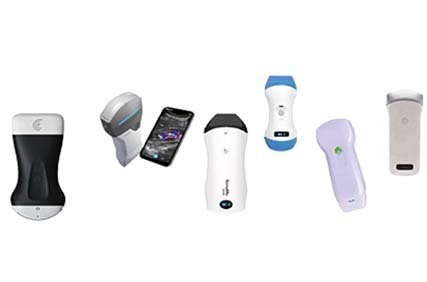
Noteworthy Features of Portable Ultrasound Machines
- Compact and Lightweight Design
- Portability: The hallmark of portable ultrasound machines is their small size and light weight, typically ranging from 3 to 10 kilograms (6.6 to 22 lbs). This makes them easy to transport and ideal for emergency medical settings, bedside imaging, or field use.
- Carry Cases: Many models come with specially designed carrying cases, ensuring the machine and probes are well protected during transport.
- Advanced Imaging Modes
- 2D Imaging: The standard mode for producing clear, real-time images of internal structures.
- Doppler Imaging: Measures the flow of blood through vessels, helping detect conditions like blocked arteries or heart conditions.
- 3D/4D Imaging: Available in some high-end portable machines, 3D/4D imaging offers detailed views of structures, especially useful in obstetrics for fetal imaging.
- Elastography: Some advanced models feature elastography for evaluating tissue stiffness, which is beneficial for detecting liver diseases, tumors, and other soft tissue conditions.
- Wireless Probes
- Freedom of Movement: Wireless probes enhance the portability of the ultrasound machine even further, as they eliminate the need for physical cables between the transducer and the processing unit.
- Improved Mobility: These probes enable healthcare professionals to perform examinations in tight spaces or during mobile operations where wired connections might be impractical.
- AI-Enhanced Features
- Automated Measurements: Some portable ultrasound machines are integrated with AI software that assists with measuring key metrics such as the size of organs, blood flow velocities, or the size of a fetus in obstetric imaging. This reduces the potential for human error and speeds up the diagnostic process.
- Image Optimization: AI can also improve image quality, automatically adjusting settings like focus and gain for better resolution, helping novice users get clearer images without adjusting many settings manually.
- Cloud and Remote Access
- Telemedicine Capabilities: With built-in cloud integration and Wi-Fi/Bluetooth functionality, portable ultrasound machines can quickly upload and store images in the cloud, making remote consultation and telemedicine practices easier. This is especially useful in underserved areas with limited access to specialists.
- Real-Time Consultation: Physicians can send ultrasound images to specialists for consultation or second opinions, enabling quicker decision-making and diagnosis.

Applications of Portable Ultrasound Machine
Portable ultrasound machines have transformed healthcare and diagnostic practices, providing healthcare professionals and other experts with the ability to conduct real-time assessments and evaluations in a wide variety of settings. From emergency rooms to field operations, these devices have expanded accessibility to medical imaging in ways that were previously not possible.
Medical Applications of Portable Ultrasound Machine
1. Medical and Healthcare Settings
- Emergency and Trauma Care
In critical emergency situations, portable ultrasound machines are essential for quick and accurate diagnosis. In trauma centers, for instance, they are used to perform focused assessments of patients who may be suffering from internal injuries, such as internal bleeding or organ damage, often caused by accidents or falls. - Point-of-Care Diagnosis
Point-of-care (POC) ultrasound involves conducting diagnostic imaging at or near the patient’s location, rather than requiring them to move to a diagnostic imaging center. - Prenatal Care and Obstetrics
Prenatal care is one of the most important areas where portable ultrasound machines are having a major impact. Expecting mothers can benefit from convenient ultrasound imaging without needing to travel long distances. - Cardiology
Cardiologists are increasingly using portable ultrasound machines to perform echocardiograms to evaluate the heart’s structure and function. These portable devices allow them to quickly assess heart function at the bedside in both hospital and outpatient settings. - Rural and Remote Healthcare
In areas where medical resources are scarce or where access to healthcare facilities is limited, portable ultrasound devices are invaluable. Rural clinics, remote villages, and disaster-stricken zones often lack access to traditional, bulky ultrasound machines.
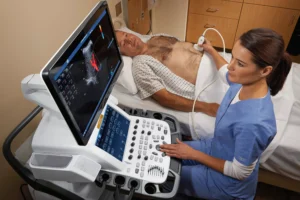
Non-Medical Applications of Portable Ultrasound Machine
2. Veterinary Medicine
- Animal Health Monitoring
Veterinary professionals have embraced portable ultrasound machines to monitor animal health. Whether diagnosing pregnancy in cattle, evaluating abdominal conditions in pets, or assessing the heart health of larger animals, these devices are crucial for on-site diagnostics. - Mobile Vet Clinics
For rural areas and for owners of farm animals, portable ultrasound systems are an invaluable tool in mobile veterinary clinics. In a mobile clinic setting, portable ultrasound devices allow veterinarians to perform important diagnostic procedures and offer therapeutic interventions right in the field, such as checking for signs of pregnancy, internal organ health, or musculoskeletal issues in livestock. This ensures that even areas far from the main veterinary offices have access to timely care.
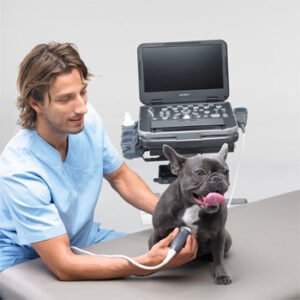
3. Sports and Fitness
- Sports Injury Assessment
Portable ultrasound devices are crucial tools in sports medicine for evaluating injuries sustained by athletes. Soft tissue injuries such as muscle strains, tendon tears, and ligament sprains can be diagnosed quickly with ultrasound imaging. - Physical Therapy
Physical therapists also use portable ultrasound for therapeutic purposes, especially in the treatment of musculoskeletal conditions. Therapeutic ultrasound, which uses high-frequency sound waves to promote healing, is a non-invasive method used to alleviate pain, reduce inflammation, and promote tissue repair.

4. Military and Disaster Relief
- Field Medical Support
In the military, where medical support must be quick and efficient, portable ultrasound machines are used for immediate on-site diagnosis. - Search and Rescue Operations
During search and rescue missions, especially in difficult-to-reach areas, portable ultrasound devices allow rescuers to quickly identify any serious internal injuries in survivors.

5. Environmental Monitoring
- Marine and Aquatic Studies
Marine biologists and environmental researchers use portable ultrasound devices to monitor the health of marine animals.
For example, scientists studying fish populations can use ultrasound to determine the health of fish and assess their reproductive status, which is crucial in conservation and aquaculture efforts.
- Agricultural Use
Farmers can also benefit from portable ultrasound machines. For example, livestock owners may use ultrasound devices to monitor pregnancy and fetal health in cows or sheep.

6. Educational Use
- Medical Training
Portable ultrasound machines are valuable educational tools in medical training programs. Medical students and practitioners can use portable devices to practice performing ultrasounds, learning both the technical skills and how to interpret the images. - Student Health Clinics
In educational institutions, portable ultrasound devices are increasingly used in student health centers. This allows on-site imaging to diagnose common issues, such as abdominal pain or pregnancy.

7. Personal Health Monitoring
- Home Healthcare
In the growing field of home healthcare, individuals with chronic conditions such as kidney disease, heart conditions, or pregnancy can benefit from having portable ultrasound machines to monitor their health. - At-Home Pregnancies
For expectant mothers, portable ultrasound can help them monitor the health of their baby in the comfort of their own homes.
Some portable ultrasound devices are designed to be easy to use, allowing parents to see the growth and development of their child without needing to make frequent trips to a clinic. These devices provide a sense of connection and comfort, offering reassurance during pregnancy.

How does a Portable Ultrasound Machine work?
A portable ultrasound machine uses sound waves to create images of the inside of the body. The basic principle behind ultrasound is the use of high-frequency sound waves that bounce off tissues inside the body, with different tissues reflecting the sound waves differently based on their density.
Key Technologies Used in Portable Ultrasound Machines
Several key technologies make the portable ultrasound system effective in both traditional and advanced diagnostic imaging. These include:
- Miniaturized Electronics
One of the most significant advancements that allow ultrasound technology to be portable is the miniaturization of electronic components. Traditional ultrasound machines contain large, bulky processors and display systems.
In contrast, portable ultrasound machines incorporate compact and lightweight processors, battery packs, and display screens, making them ideal for mobile use without sacrificing image quality.
- Digital Signal Processing (DSP)
Digital signal processing technology enables portable ultrasound machines to handle the vast amount of data generated by the sound waves that reflect back from inside the body.
DSP algorithms refine the signals to enhance image quality, correct distortions, and adjust for various factors such as depth or tissue characteristics. The result is high-resolution images that assist healthcare professionals in diagnosing conditions with precision.
- Wireless and Connectivity Features
Many modern portable ultrasound systems include wireless capabilities, allowing them to transmit data and images directly to a cloud-based system or an electronic medical record (EMR) system for storage, review, and remote consultation. - Battery and Power Management
Portable ultrasound machines rely on rechargeable batteries to function in the absence of an electrical outlet.
These devices are engineered to provide hours of use on a single charge, ensuring they can be used in emergency situations, in rural areas, or during transport.
- High-Resolution Display Screens
Despite their compact nature, portable ultrasound machines feature high-resolution LCD or LED screens that present detailed images. These screens can display 2D or 3D imaging, depending on the complexity of the model, allowing healthcare providers to visualize structures in real-time. - Advanced Imaging Technologies
Portable ultrasound machines often incorporate enhanced imaging technologies like Doppler ultrasound, which measures the flow of blood in arteries and veins, and elastography, which assesses the stiffness of tissues, often used to detect liver disease or tumors. - User Interface and Software
The ease of use of portable ultrasound machines is significantly enhanced by their intuitive user interfaces. With touch-screen controls, simplified menus, and pre-programmed settings, healthcare professionals can quickly adjust settings for different types of examinations.
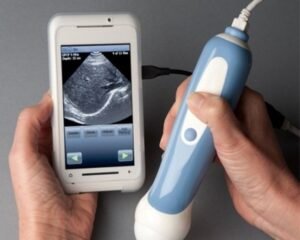
Top Brands of Portable Ultrasound Machines
Portable ultrasound machines have gained immense popularity due to their versatility, convenience, and ability to deliver high-quality imaging in diverse settings. A variety of trusted brands dominate the market, offering innovative designs, advanced features, and reliable performance.
Below is an overview of some of the top brands, highlighting their notable features and applications.
- Dr. Sono
Dr. Sono is an emerging leader in portable ultrasound technology, offering state-of-the-art solutions designed to meet the needs of modern medical practices. Their flagship products, such as the Tri-Scan Max Portable Ultrasound Scanner, prioritize usability, portability, and advanced imaging capabilities, making them a preferred choice among healthcare professionals.
- Key Features:
- Dual-probe technology for both convex and linear imaging.
- Advanced imaging modes, including B-mode, M-mode, Color Doppler, Power Doppler, and Pulsed Wave Doppler.
- Wireless design compatible with Windows, iOS, and Android devices for maximum flexibility.
- Lifetime premium app access without any subscription fees, providing cost-effective solutions.
- Applications:
- Ideal for emergency medicine, primary care, obstetrics, cardiology, and musculoskeletal imaging.
- Excellent for full-body diagnostics and remote fieldwork due to its wireless and versatile design.
- CE and FDA-certified, ensuring compliance with global medical standards.
2. GE Healthcare
GE Healthcare is a leading name in the medical imaging industry and offers a range of portable ultrasound machines known for their reliability and precision. Devices like the GE Vscan Extend and GE Venue Series are designed for quick assessments and detailed imaging.
- Key Features:
- Compact, pocket-sized devices for bedside assessments.
- Advanced visualization tools like color Doppler imaging.
- Intuitive touch-screen controls and AI-assisted features.
- Applications:
- Frequently used in emergency medicine, cardiology, and primary care.
- Ideal for bedside assessments and point-of-care imaging in hospital settings.
3. Philips Healthcare
Philips is another global leader in medical technology, offering highly portable and user-friendly ultrasound systems like the Lumify series. The Philips Lumify transforms smart devices into ultrasound machines, bringing portability to a new level.
- Key Features:
- Plug-and-play design compatible with smartphones and tablets.
- High-resolution imaging with advanced diagnostics tools.
- Wireless data sharing for seamless collaboration and telemedicine.
- Applications:
- Perfect for remote healthcare, home visits, and telemedicine consultations.
- Widely used in emergency care, musculoskeletal imaging, and obstetrics.
4. Siemens Healthineers
Siemens Healthineers is known for blending innovation with functionality. Their ACUSON POCUS series offers portable ultrasound solutions equipped with advanced diagnostic capabilities.
- Key Features:
- Ergonomic design for better mobility and ease of use.
- High-resolution imaging with Doppler capabilities.
- Integrated software for precise measurements and reporting.
- Applications:
- Popular in cardiology, critical care, and pediatrics.
- Effective in both clinical and mobile healthcare settings.
5. Mindray
Mindray specializes in cost-effective, high-performance portable ultrasound machines that cater to diverse medical needs. The Mindray M9 and TE7 series are among their most popular products.
- Key Features:
- Single Crystal technology is used for clear imaging with advanced transducer.
- Customizable presets for various specialties.
- Durable and lightweight designs for portability.
- Applications:
- Widely used in anesthesia, emergency medicine, and point-of-care diagnostics.
- Suitable for both urban clinics and rural healthcare programs.
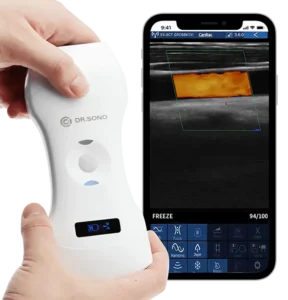
Limitations/Drawbacks
Portable ultrasound machines have revolutionized diagnostic imaging by offering mobility and convenience. However, like any technology, they have limitations and drawbacks that may impact their usability in specific scenarios.
Below is a simplified and structured breakdown for better understanding:
Limitations of Portable Ultrasound Machines
1. Lower Imaging Quality
- Portable machines generally provide lower resolution compared to full-sized systems.
- This makes it harder to detect subtle abnormalities or small structures, especially in complex medical cases.
2. Limited Functional Capabilities
- They often lack advanced imaging features such as elastography or 3D/4D imaging.
- Fewer transducer options restrict their versatility for specialized procedures.
3. Smaller Display Screens
- Compact screens make analyzing images in detail more difficult.
- Operators may experience eye strain during extended use.
4. Dependency on Operator Skill
- High-quality results depend heavily on the user’s experience.
- Novices may struggle with accurate interpretation, leading to diagnostic errors.
5. Limited Use in Advanced Diagnostics
- Portable machines may not handle complex imaging requirements, such as advanced cardiac or obstetric evaluations.
6. Battery Reliance
- These machines depend on battery power, which limits operation time.
- Inconsistent power availability in remote or emergency scenarios can cause interruptions.
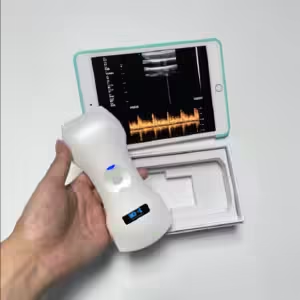
Drawbacks of Portable Ultrasound Machines
1. Vulnerability to Wear and Tear
- Frequent movement exposes machines to risks of physical damage.
- Sensitive components can degrade faster due to handling.
2. Higher Costs for Advanced Models
- While basic models are affordable, high-end portable machines with better features can be as expensive as mid-range traditional systems.
3. Storage and Connectivity Limitations
- Many models have limited onboard storage for patient data.
- Older or budget-friendly machines may lack seamless integration with hospital data systems.
4. Environmental Challenges
- Extreme environments like high heat or freezing conditions can affect performance.
- Battery efficiency may decline in such settings, reducing reliability.
Conclusion
Portable ultrasound machines are revolutionary tools, combining advanced imaging capabilities with unmatched portability. From providing critical diagnostics in remote areas to supporting sports medicine, emergency care, and medical training, these devices have transformed healthcare accessibility and efficiency. Their importance lies in convenience, cost-effectiveness, and improving patient outcomes, especially in challenging environments.

Article by
Scott Caswell
Scott is a co-founder of PUM and an ultrasound technology expert with a passion for innovation in the medical field. Scott has dedicated his career to advancing portable ultrasound devices, making medical imaging more accessible to professionals around the globe.
When not refining ultrasound devices, he enjoys hiking, experimenting with new recipes, and exploring the latest tech gadgets. Scott is dedicated to making healthcare more accessible and efficient through cutting-edge ultrasound solutions.
Join Our Mailing List & Save!
Enter your email address below to receive exclusive promotions and discounts along with additional product information and tips
Shop Now
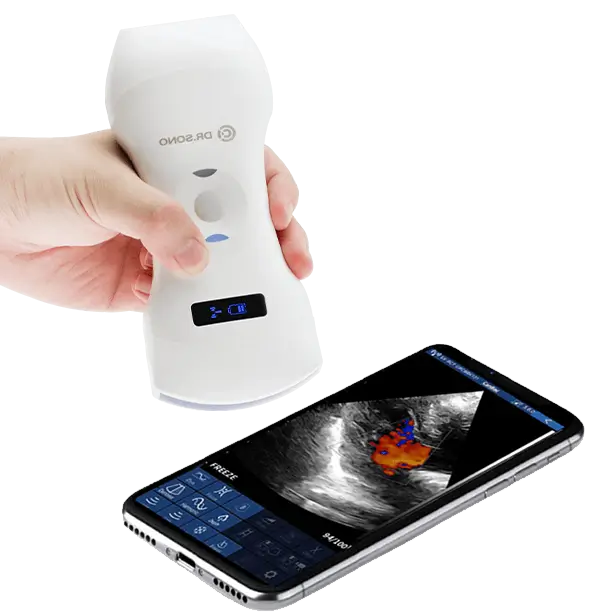

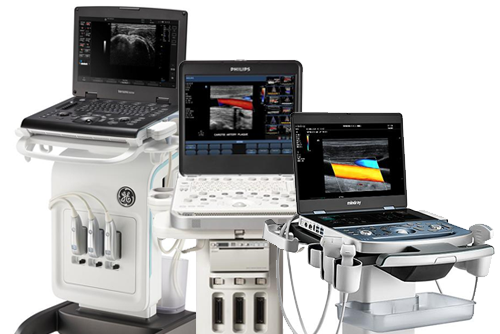
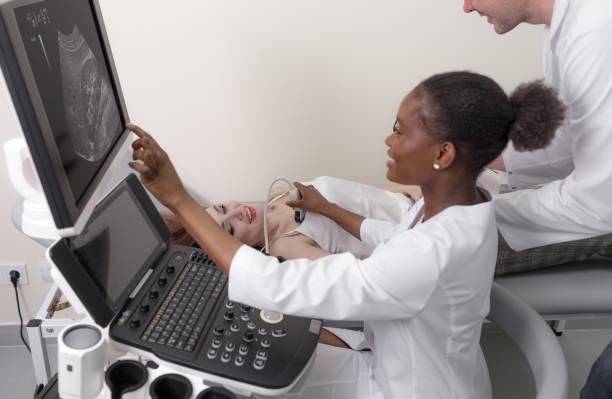
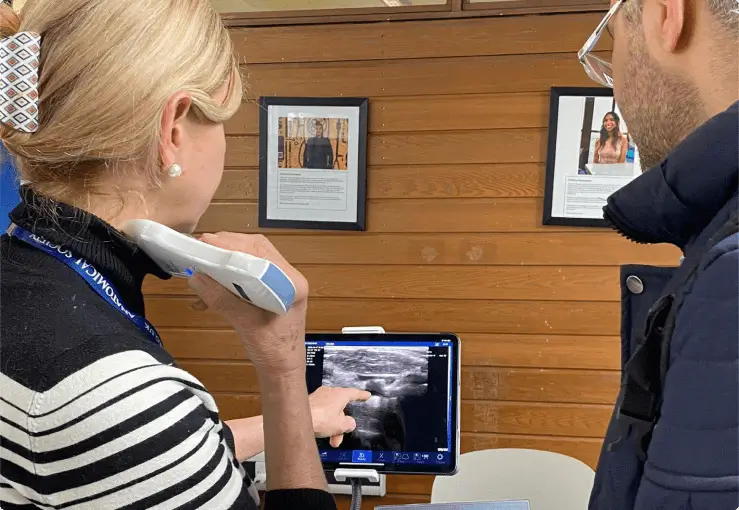

Leave a Reply